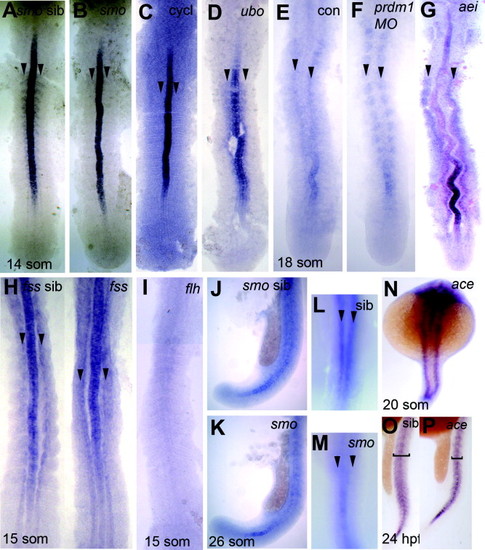
Hedgehog signalling is required for appropriate regulation of vgl-2b. In-situ mRNA hybridisation for vgl-2b (blue/purple) shown anterior to top in dorsal (A–I, L, and M) or lateral (J, and K) flatmount or dorsal (N) or lateral (O and P) wholemount. Arrowheads indicate lack of vgl-2b mRNA in adaxial cells. (A–C and J–M) Smoothened (siblings, A, J, L; smo, B, K, M) and cyclopamine-treated (cycl; C) embryos in which loss of hedgehog (Hh) signalling prevents adaxial slow myogenesis. Notochord expression is unaffected. (D–F) Neither prdm1 mutation (ubo, D) nor prdm1 morpholino injection (E and F) noticeably alters vgl-2b expression. (G and H) Mutations in deltaD (aei; G) or tbx24 (fss; H) affect somite borders, but vgl-2b expression persists in slow fibres (arrowheads), although poorly segmented. (I) Floatinghead (flh) mutants have an absence of notochord due to mutations in the homologue of Xenopus Xnot and lack both notochord and early adaxial expression of vgl-2b. (N–P) Fast fibres are reduced (brackets) at 24 hpf by loss of fgf8 in acerebellar (ace) mutants, but vgl-2b expression is otherwise present.
|

